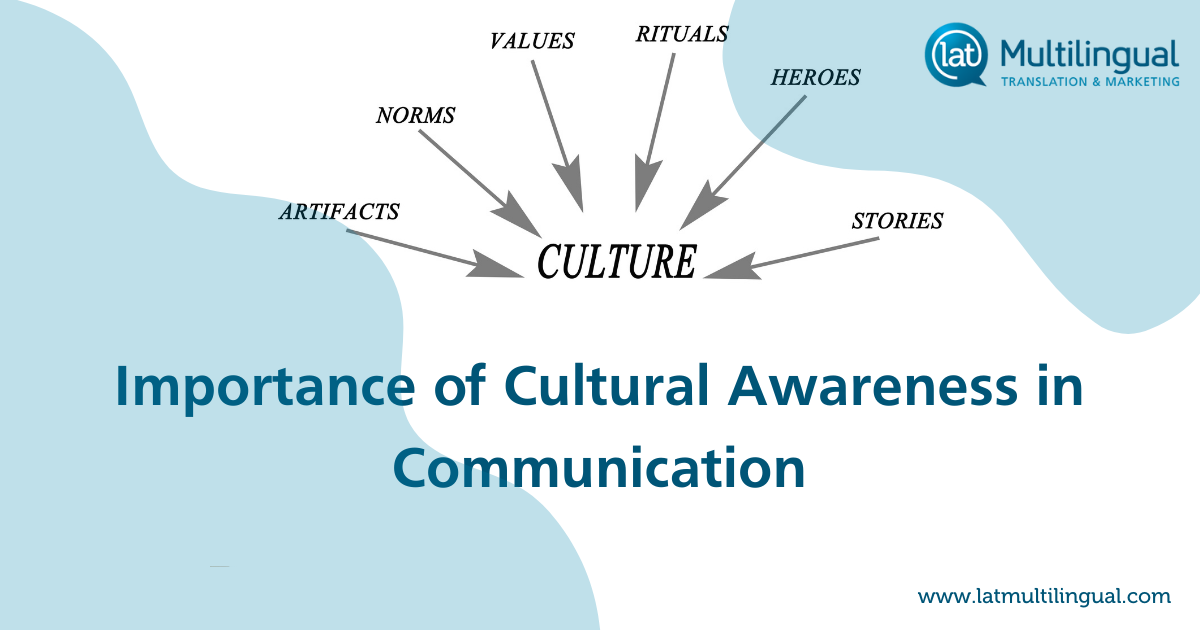Cultural awareness should be an essential part of doing business. In an increasingly globalized world, it is important for businesses to be aware of cultural differences in order to be successful in the global marketplace. Understanding cultural sensitivities allows them to create better products and services for their customers, as well as more successful marketing campaigns.
Immigration in Canada is ongoing and making our cities ever more diverse. Customers are increasingly looking for products and services that are adapted to their own cultural preferences. In order to meet this demand, many companies are implementing diversity training programs and hiring international employees who speak multiple languages.
WE’RE CURIOUS –
If you are a marketer or an organization involved with engaging a multicultural audience in Canada, then this question is for you:
What is Cultural Diversity?
Cultural diversity is the variety of different cultures, customs, traditions, ethnicities and values that exist within a society. It is important for companies to deepen their cultural awareness in order to create an inclusive marketing strategy.
Hiring a diverse workforce can increase innovation and creativity in an organization. It also helps companies understand their customers better and be able to engage with them about the products that they want or need.
“54% of consumers surveyed by Facebook said they do not feel fully culturally represented in online advertising. (Facebook Advertising)”
Meanwhile…
“70% of Gen Z consumers are more trusting of brands that represent diversity in ads. (Microsoft Advertising)”
Inclusive marketing works by creating cultural awareness and addressing the needs of diverse customers, employees, and various stakeholders. It can also be a way to generate revenue and profit for businesses. For example, inclusive marketing goals can be achieved by gaining sponsors for events that are targeted at diverse audiences or creating campaigns that speak to different cultures to drive revenue.
Below is an excellent example of embracing cultural diversity in an inclusive marketing campaign. The brand, Neutrogena, recognized the Festival of Colours celebrated by South Asians and engaged with them by highlighting the usage of their product during the festival.
How Can You Foster Diversity in Your Company?
Companies that understand the importance of cultural awareness are always looking for better ways to foster cultural diversity and inclusiveness.
It is important to start with the basics and make sure that your company’s policies, benefits, and practices are inclusive of all cultures. It is also important for your organization to hire people from diverse backgrounds.
How do diverse cultural backgrounds affect communication in businesses?
The key to success in any relationship is communication.
It is the only way for people to share their ideas and understand each other. However, communication does not happen without understanding the person or group you are engaging with. This is where cultural awareness comes into play.
Cultural diversity in your target groups is based on the experiences and cultural backgrounds that shape people’s thoughts, beliefs, and values. In order to communicate effectively, you need to have cultural awareness and sensitivity to their lived experiences.
For example, in East Asian cultures, communication is subtle and implied. Therefore, despite the best of intentions, at times, the direct style of communication of Western cultures can offend someone from an East Asian culture. For instance, the word “no” is direct in Western communication, while in East Asian communication, a “no” would be told indirectly as “we’ll see”, “maybe”, etc, because direct communication is not common.
Here’s an example of an Australian FMCG company, SunRice, and their award-winning campaign during the Chinese New Year, which portrays a Sino-Australian family sharing a meal with their Australian neighbours.
Understanding the subtle challenges of using English with non-English speakers as well as the nuances of non-verbal communication, is essential to achieve business goals when working with a cross-cultural audience.
To illustrate further the importance of cultural awareness in business, here are a few characteristics that might impact someone’s purchasing decision:
Living with family –
Living with family members differs across cultures. For some cultures, it is perfectly natural to live in a nuclear setting, while for others, family members leaving the family is not acceptable.
For instance –
For many Canadian families, if a child moves out of the family home, it signifies the beginning of a new phase of life. Canadian parents often feel happy and encourage their children to build their new life.
On the contrary, in many South Asian families, children usually live in their family home until marriage. For many South Asian families, a child leaving home is definitely not something to celebrate.
Pro Tip: To demonstrate cultural awareness in marketing campaigns, brands can show commercials or marketing messages that can resonate strongly with a diverse population in Canada.
Here is an example of cultural awareness from IKEA featuring a South Asian family together at home celebrating the Diwali holiday.
Purchasing decisions with family –
Family members can influence the purchasing decision of an individual when it comes to marriage, choosing a career, moving out, buying a house, or car, etc. It is commonly a collective process where different family members share their opinion.
It can sometimes result in prioritizing the wishes of family members over personal preferences. For example, a Chinese customer will value the opinion of his family for a car purchase which is family-friendly.
Brands that value cultural awareness must think about their target group’s surroundings, lifestyle, and exposure to different environments while they make a purchasing decision.
Pro tip: Real estate businesses, wedding planners, interior decorators, and travel and tourism business owners should focus on the marketing messages highlighting the importance of family members while engaging with multicultural audiences that have strong family values.
Language preference –
CSA Research found that 75% of consumers are more likely to buy products from websites in their native language. The finding breaks the long-standing assumption that English is the most preferred language. If a company does not localize their purchasing experience, the company can lose nearly 40% of the target market that prefers communication in its local language, according to the same study.
Slangs or idioms –
When you try to communicate with a specific cultural group, it is wise to pay attention to words and phrases that are solely related to that particular culture. It helps to make your localization efforts successful.
Here are a few examples of idioms that differ across cultures and their English equivalents:
|
French Idiom: Coûter les yeux de la tête. Literal translation: To cost the eyes of the head. English equivalent: To cost an arm and a leg |
Chinese Mandarin Idiom: 抛砖引玉 (pāo zhuān yǐn yù). Literal translation: To cast a brick to attract jade. English equivalent: Tossing ideas around. |
Graphic imagery and visual content –
Photos, images, icons, logos, etc. can convey a lot to your target audience. Several brands showcase graphics in their communications to stay on trend or to resonate with a specific target group, such as South Asians, French Canadians, etc.
However, brands must be cautious here when choosing images, such as religious symbols or iconography for their products, as they might offend certain customers in other groups.
For example, the clothing retail company Gap had to apologize for selling a T-shirt that had a politically sensitive map of China.
Inclusion of every possible preference showcasing cultural awareness –
If you want to reach the consumers of Québec, then you need to provide French Canadian content. It is not solely about following bilingual regulations; it is a way to reach out and engage with a community of 8 million potential customers.
To create culturally-sensitive marketing messages, you must consider all aspects of what makes us human: our cultures, religions, ethnic backgrounds, gender identity, sexual orientation, and spoken language, but mostly, adjust your marketing campaigns to each group you wish to reach and be as thorough as you can be. For example, when featuring a body care product, you should include people of all skin types and colours.
Brand empathy –
A 2013 Nielson study revealed that Filipino consumers have a strong brand affinity, with almost 80% of respondents saying that they would prefer to buy from a familiar brand. Realizing the importance of cultural awareness, Canadian brands should consider that while moving to a new country, Filipino consumers may not be able to find the brands they are familiar with, so it is an opportunity to engage with them actively to build familiarity and ensure long-term brand loyalty.
Cultural awareness involves consideration of several factors when crafting messages for diverse target groups.
Translating and localizing messages go beyond rewriting social messages, ads, and marketing materials. You need to involve an entire team of translators and designers to make comprehensive marketing materials for a particular culture.
“Check out how LAT helped Mission Hill Winery in engaging with Chinese Audiences in Canada during the Mid-Autumn Moon Festival”
Translating English-language campaigns for different cultures
When you consider the culture of your target audience, you need to ensure your marketing content is localized. It might differ completely from your English-language campaign, but that’s okay!
“Just because your English campaign is successful, it doesn’t mean that it would work well by simply translating it into another language.”
A localized approach helps your brand to connect with your audience.
Nevertheless, it is too simplistic to assume that language is the only factor that determines the success of a campaign. Several marketing studies have found that customer preferences differ across markets and cultures.
Here are a few specific drivers for Québec consumers that you can keep in mind while targeting this market:

Cultural awareness in business is more important now than ever before.
Investing in a marketing experience that honours your target audience’s culture is an excellent way to create a balance between your customers’ needs and your business goals.
You will not only be able to reach new audiences but along the way gain their respect and loyalty as well, ultimately achieving a return on your investment.
Comprised of a culturally-diverse team, LAT Multilingual understands the importance of cultural awareness and is passionate about multilingual translation and marketing for various demographics. If you want to reach French Canadians, Indo-Canadians, Chinese Canadians, and more, we’ve got you covered!
If you are thinking of a multicultural marketing strategy, please do not hesitate to get in touch with us!















